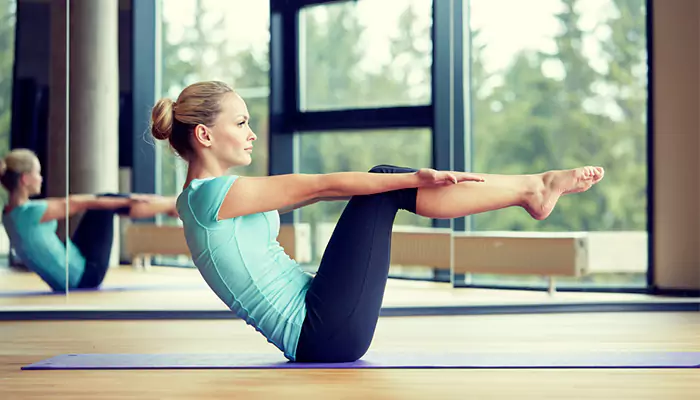
When it comes to choosing the right workout, the dilemma between Pilates and gym-based strength training is a common one.
Each offers distinct benefits and caters to different fitness goals. While the gym promises quicker weight loss and muscle building, Pilates offers a holistic approach focusing on core strength, flexibility, and overall body toning. Here, we explore the nuanced benefits of Pilates, and why it might be the perfect choice for your fitness journey.
Understanding Pilates
Pilates, named after its founder Joseph Pilates, is a low-impact workout emphasizing controlled movements and breathing. Its core principle lies in strengthening from the inside out, targeting the deep muscles of the abdomen and back. Unlike high-intensity gym workouts, Pilates focuses on lengthening and stretching muscles, enhancing posture, and promoting flexibility. It’s an ideal regimen for beginners and advanced fitness enthusiasts alike, offering a balanced approach to fitness without the risk of injury often associated with high-intensity workouts.
Core Strength
The cornerstone of Pilates is core strength. Unlike traditional gym exercises that might focus on isolated muscle groups, Pilates works on the deep core muscles, ensuring a strong, stable foundation for other movements. This focus leads to a tightened waistline and a stronger back, surpassing what is typically achieved with conventional ab machines. By engaging the entire core, Pilates enhances functional fitness, aiding everyday movements and improving overall body balance.
Achieving Fluid Muscles
Pilates uniquely contributes to the development of fluid, elongated muscles, steering clear of the bulkiness often associated with weight training. The exercises in Pilates are designed to stretch the muscles they tone, leading to a leaner, more balletic physique. This is particularly evident in the way Pilates tones the inner thighs and arms, providing a sleek and toned appearance without added muscle bulk.
Flexibility
Flexibility is a significant advantage of Pilates. Regular practice increases the range of motion in joints, reducing stiffness and enhancing mobility. This aspect of Pilates is especially beneficial as it counteracts the rigidity often brought on by age and a sedentary lifestyle. The stretching components of Pilates go beyond superficial muscle stretching, delving into deep tissue elongation.
Improved Posture

Pilates exercises are designed to align the spine and strengthen the postural muscles. Consistent practice leads to a noticeable improvement in posture, lending a taller, more confident appearance. This focus on alignment not only makes one look better but also helps alleviate common back pains and aches associated with poor posture.
Breathwork
Breathing is an integral part of Pilates, often overlooked in traditional gym workouts. Pilates teaches controlled, deep breathing, synchronizing breath with movement. This practice enhances lung capacity, improves blood circulation, and helps in better oxygenation of the body. The mindfulness aspect of breathing in Pilates also brings a mental clarity and stress reduction, adding a meditative element to the physical workout.
Pilates vs. Gym
Ultimately, whether you choose Pilates or gym workouts depends on your personal fitness goals. Pilates is ideal for those seeking a balanced, toned physique, improved flexibility, and a strong core. It’s particularly beneficial for individuals recovering from injuries or who are new to fitness, offering a gentle yet effective workout regime.
On the other hand, the gym is better suited for those aiming for quicker weight loss, increased cardiovascular endurance, or significant muscle building.
Pilates offers a comprehensive workout that extends beyond physical fitness, touching upon mental well-being through its emphasis on breathing and mindful movement. It’s an excellent choice for those looking to tone and strengthen their body in a balanced, sustainable way. While it may seem deceptively simple, Pilates can profoundly transform not just your body, but also your approach to health and fitness.












